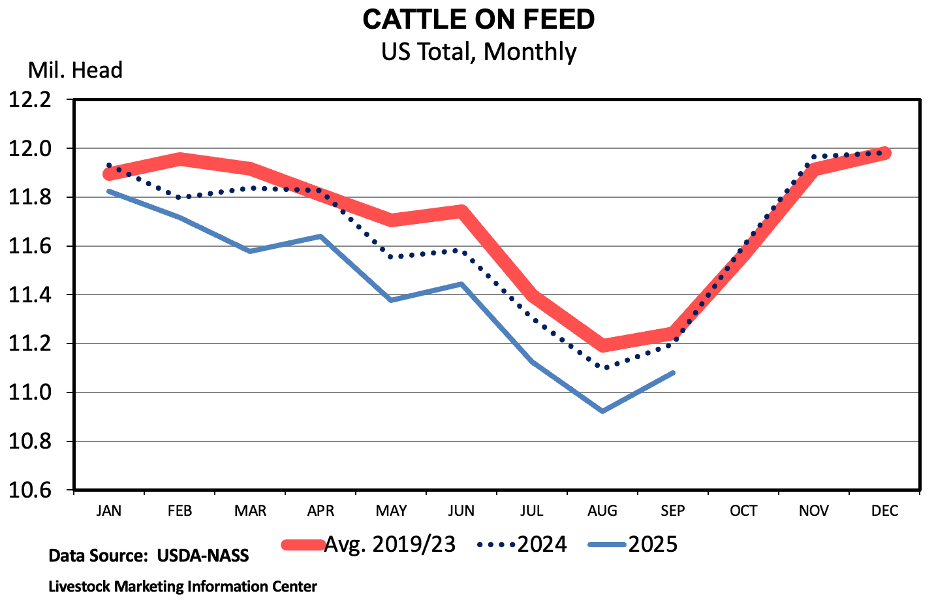The USDA’s latest Cattle on Feed report showed continued tightening of feedlot supplies. Total cattle on feed was down only 1.1 percent from a year ago, but both placements into feedlots and marketings out of feedlots were sharply below year-ago levels.

As of September 1, feedlots with 1,000 head or more reported 11.1 million cattle on feed. Placements during August were 1.78 million head, a 9.9 percent decline from August 2024. Placements were lower across all weight classes. This was the lowest August placement total since 2015.
At 1.57 million head, fed cattle marketed in August dropped 13.6 percent from a year ago. This was the lowest August marketing level since the series began in 1996. Excluding the early months of the pandemic, August 2025 was also the lowest marketings total of any month since 2015. There was one less slaughter day this year, which accounted for some of the difference, but this is still a very low marketings total.
Regional differences are stark. The three largest cattle feeding states are Texas, Nebraska, and Kansas, which combine for about 65 percent of total cattle on feed. Despite smaller placements, cattle on feed in Nebraska was up 4.7 percent, and Kansas was up 3.1 percent. Meanwhile, the number of cattle on feed in Texas was 9.1 percent below September 2024, driven by an 18 percent decline in placements into Texas feedlots. The closure of the southern border to imports of feeder cattle due to concerns of New World Screwworm is impacting southern feedlots and could lead to Texas being surpassed by Nebraska as the largest cattle feeding state in the coming months.
Nebraska has surpassed Texas in monthly totals only nine times, with most of those instances occurring during 2014-2016 and driven by severe drought reductions in Texas cattle. On September 1, Texas had 70 thousand head more cattle on feed than Nebraska and 150 thousand more than Kansas. This is much tighter than the 430 thousand and 470 thousand differences from a year ago. The 150 thousand head difference between Texas and Kansas is the closest since 1992.
Overall, this report was pretty telling about the current dynamics of the cattle and beef sector. At the national level, placements and marketings slowed sharply in August. A closer look at state-level statistics shows the shift northward in cattle feeding numbers as southern feeders face even tighter supplies.

Maples, Josh, and David Anderson. “Feedlot Placements and Marketings Down Sharply from Year Ago.” Southern Ag Today 5(39.2). September 23, 2025. Permalink


